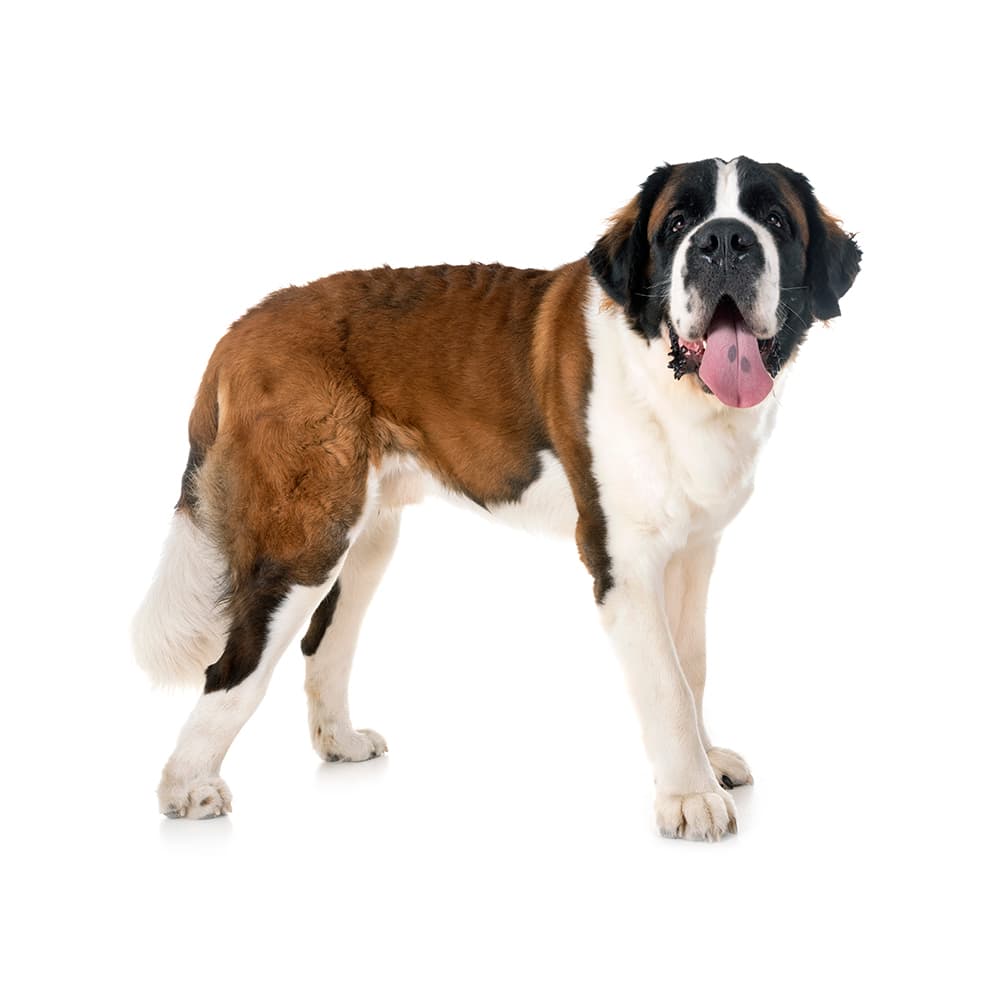Discover your dog's connection to this breed and 200+ others


Discover your dog's connection to this breed and 200+ others



The Saint Bernard breed traces its origins to the Swiss Alps. The dogs were originally bred by monks at the Great St Bernard Hospice, a traveler's inn in the 11th century. The dogs' initial role was as a guard dog, but over time they evolved into a rescue breed, primarily used to find and save lost or injured travelers in the snow and icy conditions. Once found, the Saint Bernard would lay next to them to provide warmth and help revive them. The Saint Bernard's powerful build, excellent sense of smell, and ability to predict avalanches made them indispensable in rescue missions. The most famous of these dogs was Barry, who reportedly saved more than 40 people in the early 19th century. Many of this breed died in the early 19th century because of severe weather, inbreeding and disease. In 1830 the remaining Saint Bernards were crossed with Newfoundlands which resulted in the first long coated Saint Bernard. This long hair was able to protect the dogs from the cold snow.
The Saint Bernard is a large, deep-chested dog that can be susceptible to bloat, also known as gastric dilation volvulus (GDV). This is a life-threatening condition that can come on suddenly, so it’s important to know the warning signs and get an affected dog immediate veterinary care. They are sensitive to temperature shifts, so moving from a cold environment (e.g., air conditioned indoors) to hot weather outdoors, especially too quickly, will cause distress. Saint Bernards can suffer from hip and elbow dysplasia, diabetes, entropion, ectropion, gastric torsion, distichiasis, polyneuropathy, osteosarcoma, cardiomyopathy, cervical vertebral instability, seizures and osteochondritis dissecans.
Saint Bernards are known for their gentle, friendly, and good-natured temperament. Despite their size, they are often very good with children and are generally sociable with strangers and other animals. They are intelligent and eager to please, which can make training easier, although their size and strength should be kept in mind. As they were bred for rescue work in harsh climates, they are not suited for hot weather and should be kept in a cooler environment if possible.
A canine genetic lineage is a group of individuals or entire breeds that descended from common ancestors predating modern breed formation. Often these lineages are associated with a ‘type’ of dog with a unique historical working role and associated behaviors (e.g., herding, scent hunting, etc.).
Mastiff and bull-type breeds have strong, muscular builds. Both mastiff and bull-type breeds are protective and loyal, which are essential traits for this breed as guardian dogs and as companions. Although they appear imposing, many of these breeds are known for their gentleness and affection towards their families. They are a great example of loyal guardian dogs.
Example breeds with ancestry from this lineage include French Bulldog, St. Bernard, and Bullmastiff.
The Saint Bernard has two types of coats: smooth (also known as short-haired) and rough (or long-haired). The smooth coat is dense and close-fitting, while the rough coat is longer and ranges from straight to slightly wavy. Both types have a very dense undercoat.
The image of a Saint Bernard with a barrel around its neck comes from depictions in art and is not based on historical practice. The monks of the St. Bernard Pass deny that dogs were ever outfitted with these barrels.
The heaviest Saint Bernard on record, named Benedictine, weighed an astonishing 357 pounds (162 kg).
The Saint Bernard does not need a lot of exercises compared to other breeds. However, they love being part of family activities and spending time with their owners.
https://www.akc.org/dog-breeds/st-bernard/
https://www.petmd.com/dog/breeds/c_dg_saint_bernard
https://www.pawprintgenetics.com/products/breeds/340/
https://www.ukcdogs.com/saint-bernard
https://www.fci.be/en/nomenclature/ST-BERNARD-61.html
Recommended by top vets with decades of experience
21 breeds
64 genetic health markers
50 genetic trait markers
